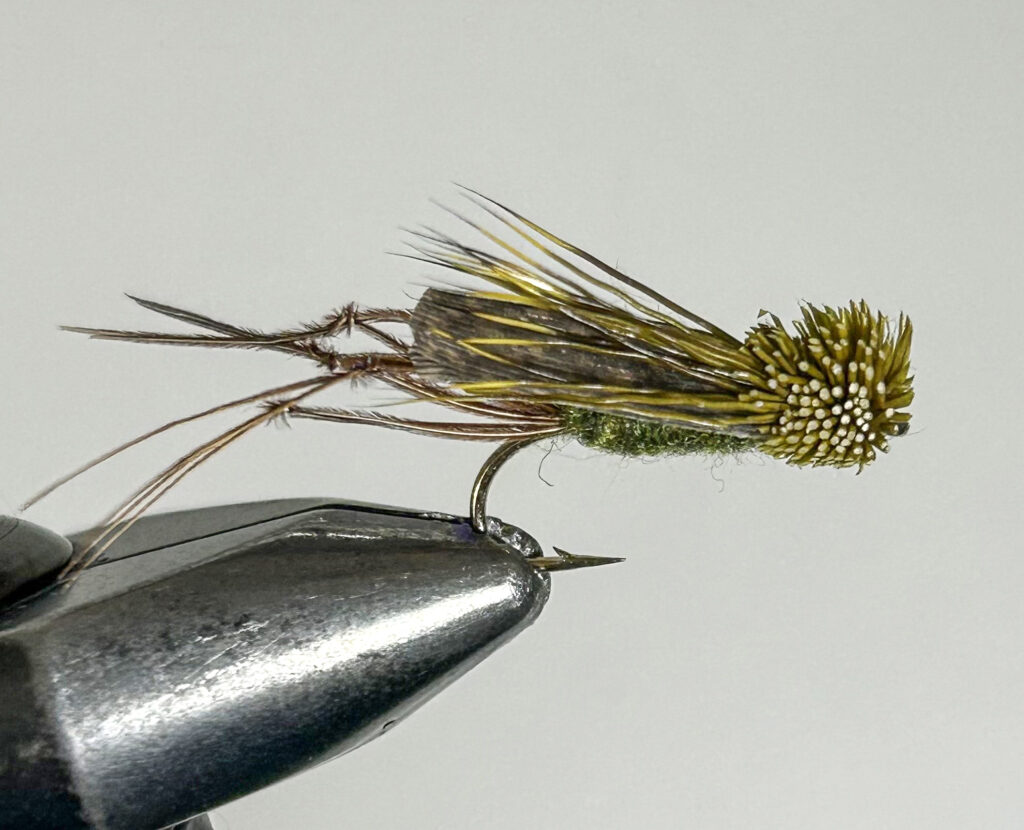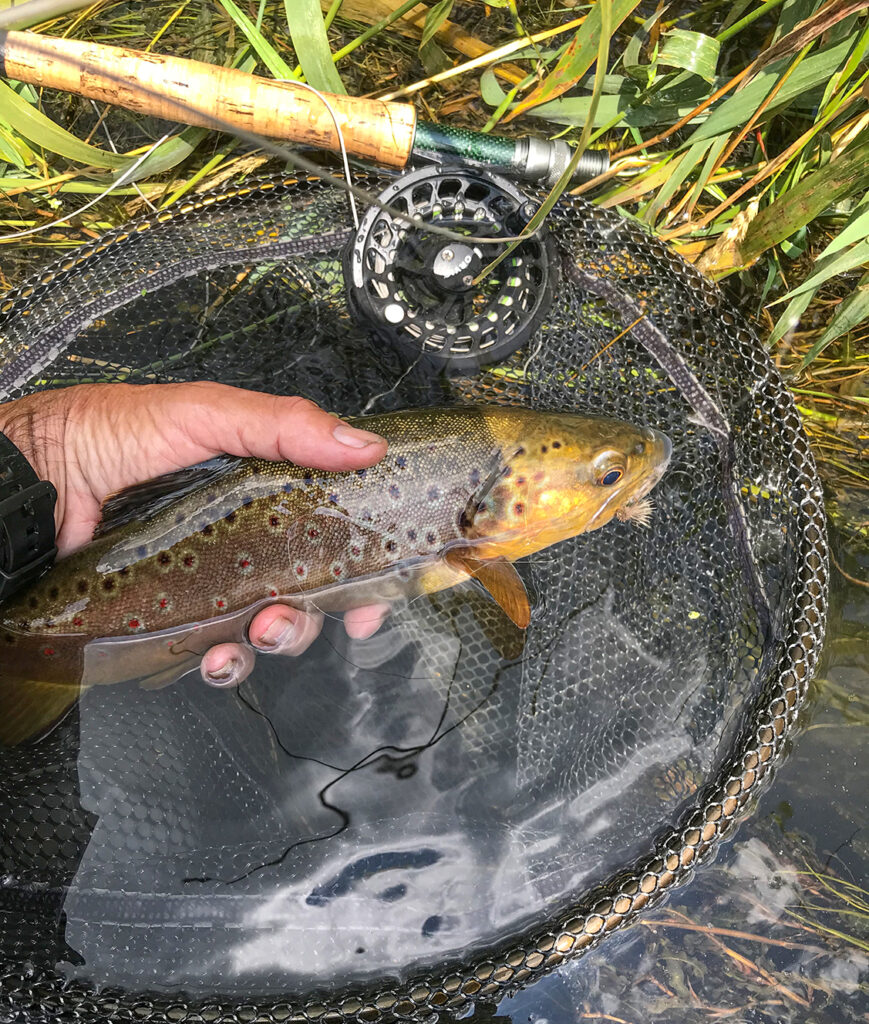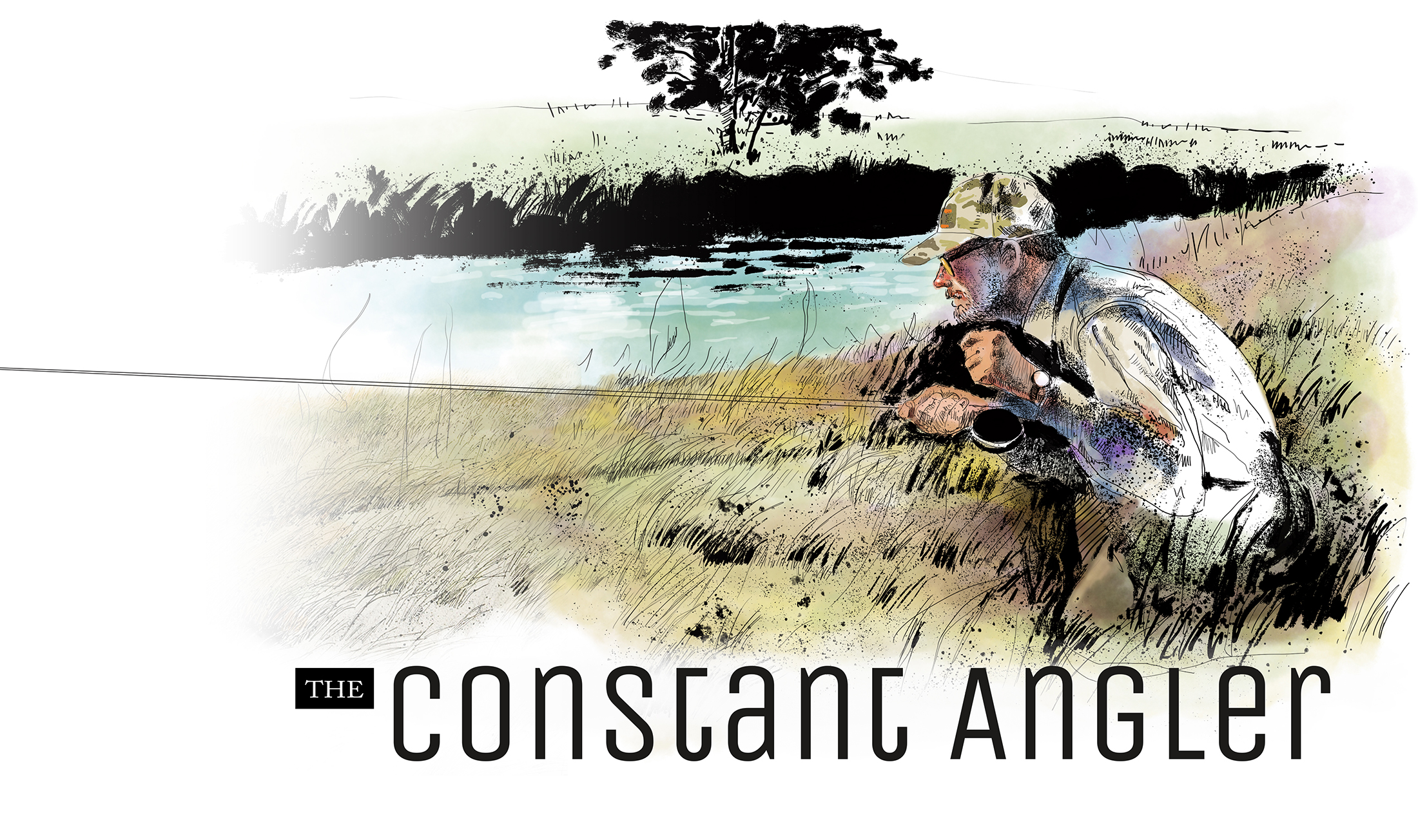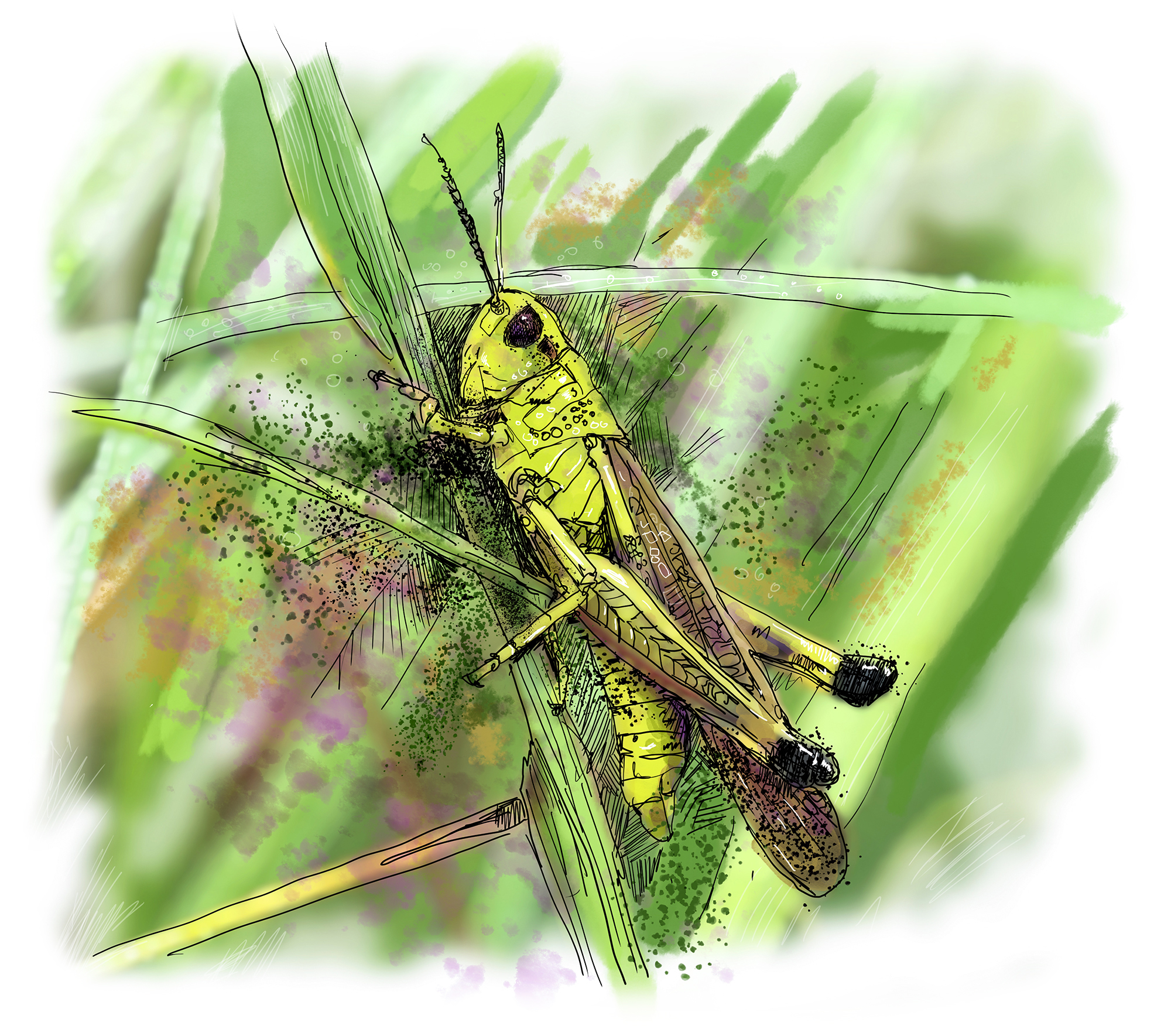July was a tough fish. Not surprised. With the lack of any real hatches, combined with hot weather and rising stream temperatures, trout on streams I fished were not very active. I adjusted when I fished, often going out by mid-morning and stopping by early afternoon. On a few occasions, under cloudy skies and somewhat cooler weather, I would get a small window of fish feeding on the surface to Mayfly spinners. However, most days were spent fishing under sunny skies, along the edges, with assorted terrestrials. Ants, beetles, crickets, and baby hoppers all took fish. On the bright side, those baby hoppers are maturing, and things are about to change. The days are coming when a sloppy cast is not always a bad thing and splashy rises will be the norm.

Most of my hopper fishing is done with two through four weight outfits. Rod weight and length are determined by the stream I’m on and sometimes wind conditions. Most of the time, my leaders are in the nine-foot range and usually tip out at 4X. Decades ago, when I started my fly fishing journey, there seemed to be four main hopper patterns. Joe’s hopper, the Gartside hopper, Ed Shenks Letort hopper and a Mike Lawson pattern called the Henry’s Fork hopper. Eventuall,y foam patterns took over the world and choices of body colors resembled a box of crayons, the large one with the crayon sharpener. As mentioned in a previous post I’m not a big fan of foam patterns on our smaller spring creeks. I prefer patterns that sit in the film, thus my long-time favorite has been the Letort hopper. It rides low and, in my opinion, offers a better hooking percentage. I also like this pattern because it’s fairly easy to tie and uses a minimum amount of materials. The only change I’ll make to it, on occasion, is to add some knotted pheasant tail leg off of the bend of the hook. I like the way they trail in the water, behind the fly. Again, the choice is yours, there’s no shortage of patterns to choose from.
Montana/Michigan fly fishing legend Kelly Gallup has a saying. I won’t quote him, but it goes something like this. There is no such thing as always and no such thing as never. Keep that in mind when choosing hopper water. Here’s how I approach two different stream scenarios.
On larger streams, such as my home water, I tend to fish primarily the edges. It’s not to say that I can’t move a fish in the middle of a riffle, in the middle of the stream. I’m just not going to spend a lot of time casting to such spots. I purposely look for overhanging bank vegetation with some depth. Depth meaning a section of water deeper than the rest of the water in any given stretch. I spend most of my time on outside bends and sections of water that are channeled but lined on both sides with overhanging vegetation. The other type of water I look for is any riffle that feeds into and runs along a grassy edge. Regardless of depth, I’m still often surprised at what can be found in such areas.
Smaller, narrow streams, I’m my opinion, is where hopper fishing can be the most fun. Often these streams will be lined, both banks, with heavy vegetation. Trout can and often will be just about anywhere. If the stream is very narrow, my only goal is to drop my hopper in the middle of the open water and wait. It’s not unusual to see a wake coming for your fly, sometimes from two different directions. It’s just a matter of which fish will get there first. If that doesn’t get your blood pumping it might be time to find a new hobby. On these streams, all open water, or even water that’s a little congested with trailing grasses, are places of opportunity for that next strike. My rule of thumb, if you can drop a hopper on that little opening of water, you should.

I don’t spend all my time in August fishing terrestrials, but if I’m out during the day it’s a safe bet that ninety percent of the time there’s a hopper at the end of my tippet. How can one not love hopper fishing? It’s that reactionary strike that I find so addictive. I also enjoy the lack of thought that goes into my hopper fishing. I’m not trying to break down a particular hatch and what stage of mayfly life the fish are feeding on. On the right piece of water I select a hopper pattern and splat that thing. There’s always a chance some trout will come find it. Fishing will get more difficult as we head towards the final stretch of the season. The late Summer/early Fall little Olives are up next. Best make sure I have a spool of 6X tippet material and a lot of patience………


Leave a Reply